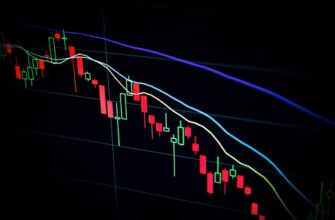First, I need to structure the article with H2 headings. Common sections might include an introduction, key settings, strategies, risk management, and FAQs. The user mentioned including lists and FAQs, so I should make sure to incorporate those.
I should start with a title that includes the main keyword. Maybe something like “Mastering USDT Futures Trading on Binance: Best Settings for the 5-Minute Timeframe”. That’s clear and keyword-rich.
In the introduction, I need to explain why the 5-minute timeframe is popular. Maybe mention scalping or short-term trading opportunities. Then, outline the key settings: leverage, stop-loss, take-profit, indicators, and position sizing.
For each H2 section, I can elaborate. Under leverage, discuss the risks and suggest starting with lower levels. Stop-loss and take-profit should include examples, like setting SL at 1% and TP at 2%. Indicators could include RSI, MACD, and Bollinger Bands. Position sizing needs to tie in risk management, maybe using the 1% rule.
Strategies section can have a few bullet points. Scalping with tight stops, trend-following with moving averages, and breakout strategies. Each strategy should mention specific indicators and settings.
Risk management is crucial. Emphasize not over-leveraging, using trailing stops, and diversifying. Maybe add a list of common mistakes to avoid, like ignoring market news or emotional trading.
FAQs should answer common questions. How to set up the chart, best indicators, managing drawdowns, and Binance’s fees. Make sure the answers are concise and directly address the questions.
I need to keep the content around 900 words. Let me check the word count as I go. Also, ensure that the keyword is naturally included in the title, headings, and throughout the content without stuffing.
Wait, the user specified to return STRICT JSON with title and content. So I need to make sure the output is valid JSON, no markdown. The content should include all the sections with H2s, lists, and FAQs formatted properly.
Let me start drafting each section. Introduction, then each H2 with subpoints. Use bullet points where possible. FAQs at the end with Q&A pairs. Make sure the language is clear and optimized for SEO, using related keywords like “Binance futures”, “USDT trading”, “5-minute chart”, etc.
Check for any technical inaccuracies. For example, Binance’s leverage options, typical stop-loss levels, and common indicators used in short-term trading. Also, mention that settings can vary based on market conditions and personal risk tolerance.
Avoid any promotional language. Keep it informative and helpful. Ensure that the advice is practical and actionable for traders. Maybe include a note about backtesting strategies before live trading.
Alright, putting it all together now. Make sure the JSON structure is correct, with title and content keys. No extra text outside the JSON. Double-check for any formatting issues or missing sections.
“`json
{
“title”: “Mastering USDT Futures Trading on Binance: Best Settings for the 5-Minute Timeframe”,
“content”: “
- Introduction to USDT Futures Trading on Binance
- Key Settings for USDT Futures on Binance (5-Minute Timeframe)
- 1. Leverage Settings
- 2. Stop-Loss and Take-Profit Levels
- 3. Indicators for 5-Minute Charts
- 4. Position Sizing
- Effective Trading Strategies for the 5-Minute Timeframe
- 1. Scalping with Tight Stops
- 2. Trend-Following Strategy
- 3. Breakout Trading
- Risk Management Tips
- Common Mistakes to Avoid
- FAQs
- How do I set up the 5-minute chart on Binance?
- What are the best indicators for 5-minute USDT trading?
- How can I reduce drawdowns in futures trading?
- Does Binance charge fees for USDT futures?
Introduction to USDT Futures Trading on Binance
n
USDT futures trading on Binance offers traders a high-leverage, short-term trading opportunity. The 5-minute timeframe is particularly popular for scalpers and day traders aiming to capitalize on rapid price movements. This guide explores the best settings, strategies, and risk management practices to optimize your trades.
nn
Key Settings for USDT Futures on Binance (5-Minute Timeframe)
nn
1. Leverage Settings
n
- n
- Recommended Leverage: 10x-20x (higher leverage increases risk of liquidation).
- Adjust Based on Volatility: Use lower leverage (5x-10x) during high volatility to avoid margin calls.
n
n
nn
2. Stop-Loss and Take-Profit Levels
n
- n
- Stop-Loss (SL): Set at 1%-2% below entry to limit losses.
- Take-Profit (TP): Aim for a 2%-3% target (adjust based on market conditions).
- Trailing Stops: Enable trailing stops to lock in profits during strong trends.
n
n
n
nn
3. Indicators for 5-Minute Charts
n
- n
- RSI (14-period): Overbought (>70) or oversold (<30) signals.
- MACD (5,13,1): Look for crossovers and divergence.
- Bollinger Bands: Trade reversals at the bands or breakouts.
n
n
n
nn
4. Position Sizing
n
Never risk more than 1%-2% of your capital per trade. For example, with a $1,000 balance, risk $10-$20 per trade.
nn
Effective Trading Strategies for the 5-Minute Timeframe
nn
1. Scalping with Tight Stops
n
- n
- Use 1-minute or 5-minute candlestick patterns (e.g., pin bars, engulfing).
- Combine with volume analysis for confirmation.
n
n
nn
2. Trend-Following Strategy
n
- n
- Identify the trend using 15-minute or 1-hour charts.
- Enter trades in the direction of the trend on the 5-minute chart.
- Use moving averages (e.g., 9 EMA and 21 EMA) for dynamic support/resistance.
n
n
n
nn
3. Breakout Trading
n
- n
- Wait for price to break key levels (e.g., consolidation ranges).
- Confirm with increased volume and momentum indicators.
n
n
nn
Risk Management Tips
n
- n
- Avoid Over-Leveraging: High leverage amplifies losses.
- Diversify: Don’t allocate all capital to one pair.
- Review Trades: Analyze losing trades to identify patterns.
n
n
n
nn
Common Mistakes to Avoid
n
- n
- Ignoring Binance’s funding rate (positive/negative rates affect trends).
li>Overtrading (stick to 2-3 setups per day).
li>Failing to update stop-loss levels as the trade progresses.
nn
FAQs
n
How do I set up the 5-minute chart on Binance?
n
Navigate to the Futures dashboard, select USDT pairs, and adjust the timeframe to 5 minutes using the chart settings.
nn
What are the best indicators for 5-minute USDT trading?
n
RSI, MACD, and Bollinger Bands are widely used for short-term signals.
nn
How can I reduce drawdowns in futures trading?
n
Use strict stop-loss orders, avoid revenge trading, and stick to your strategy.
nn
Does Binance charge fees for USDT futures?
n
Yes, Binance charges a maker-taker fee (0.02%-0.06% for USDT-Margined Futures).
”
}








